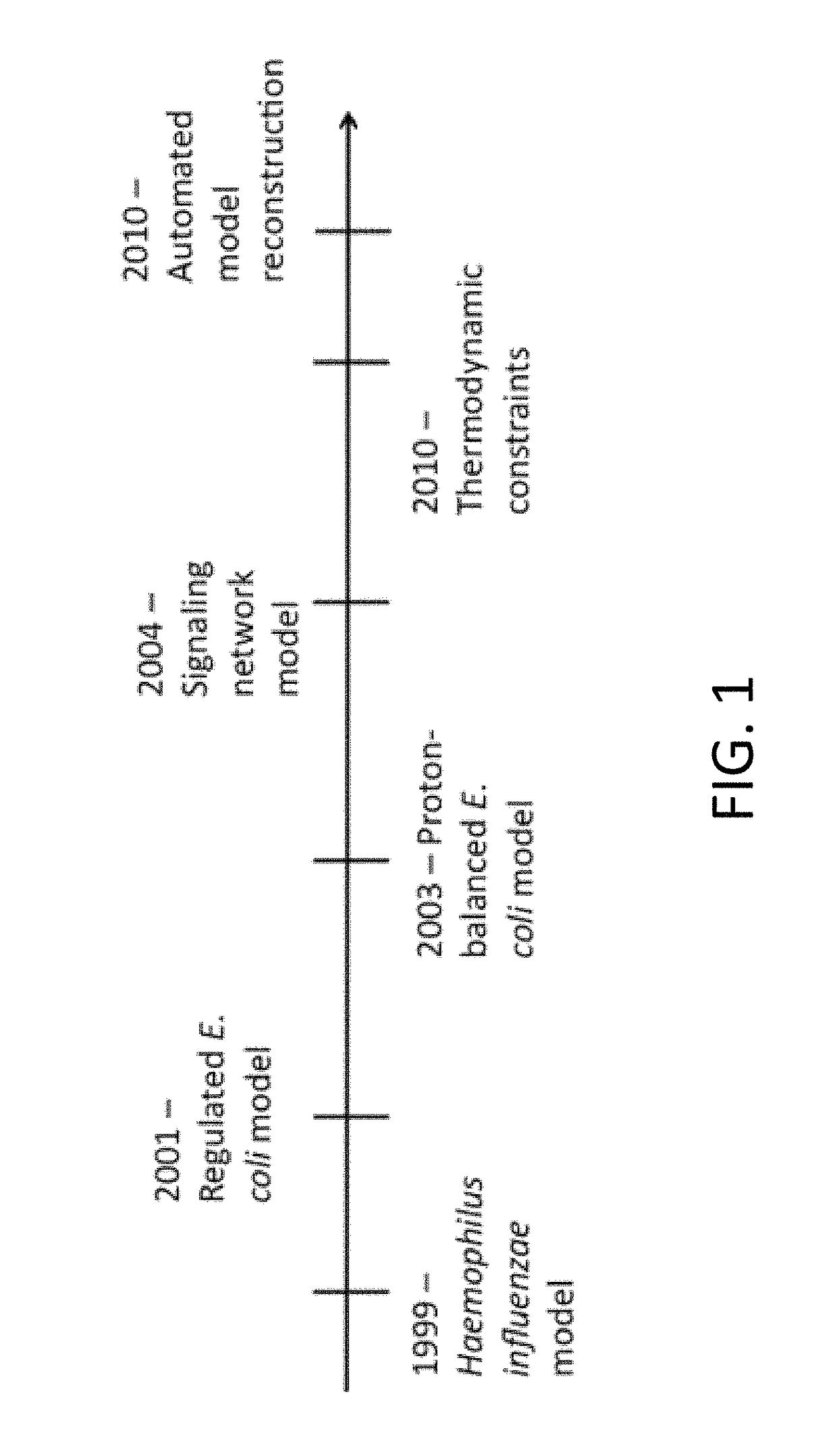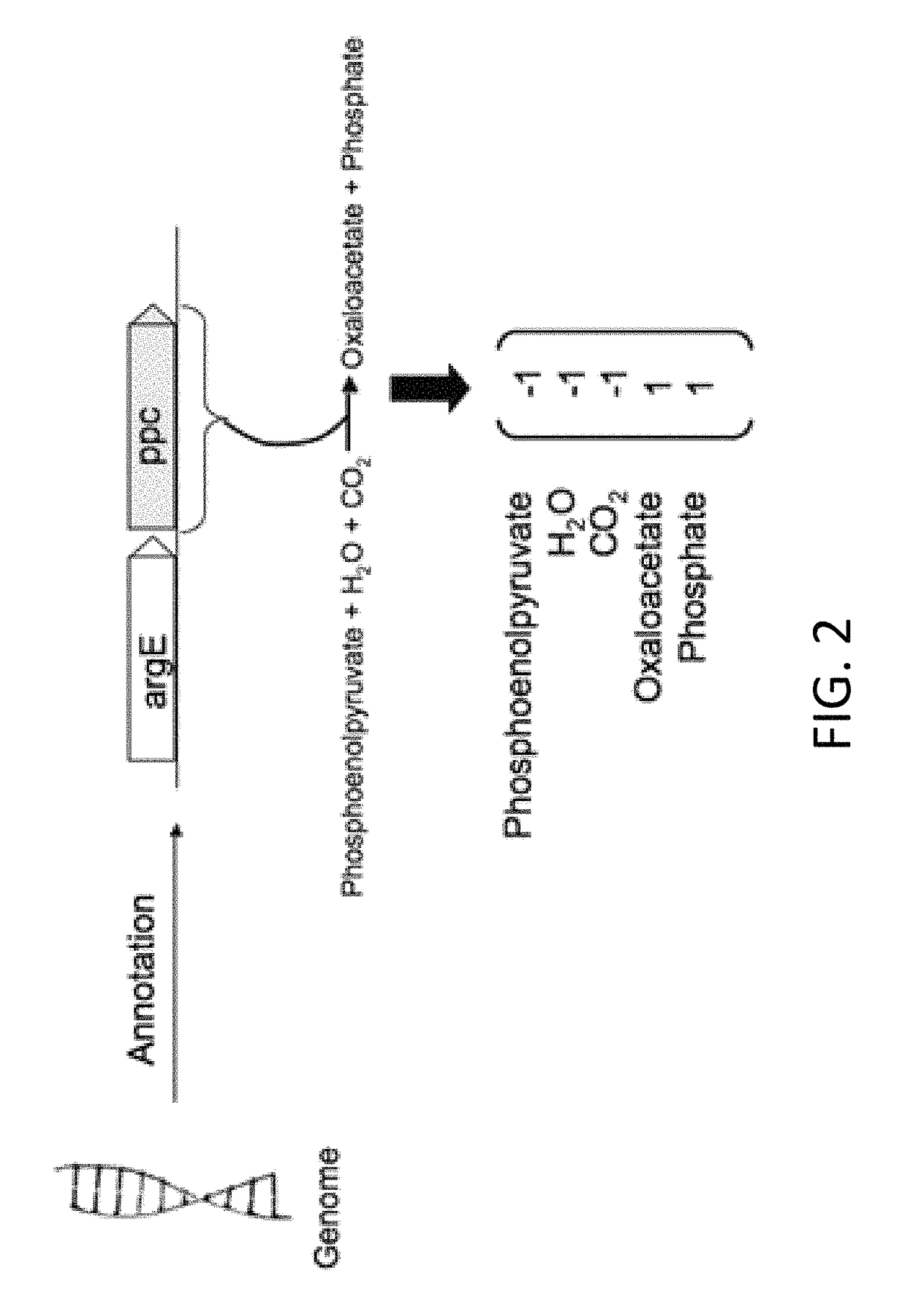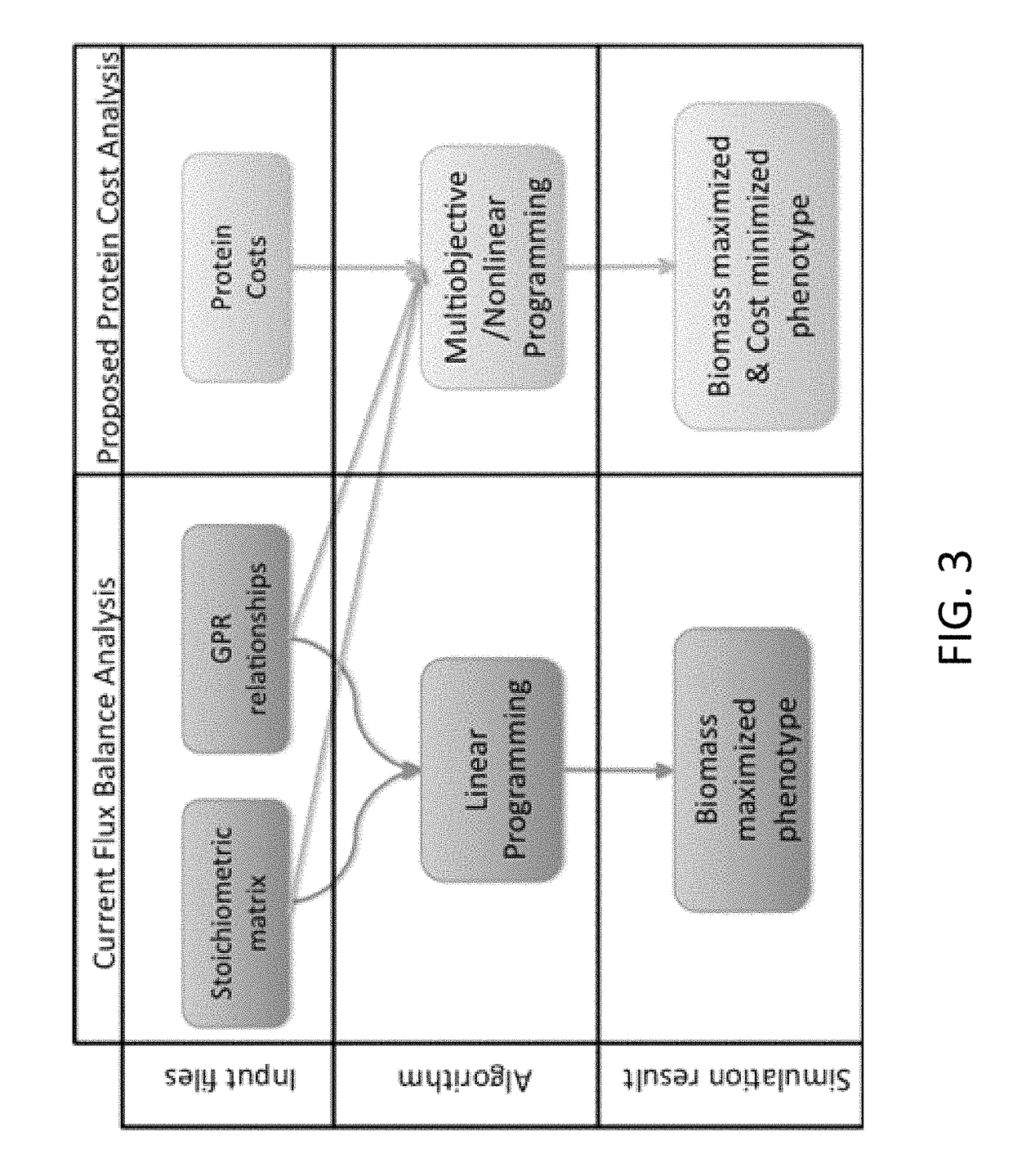Cost-optimized design analysis for rapid microbial prototyping
a microbial prototyping and cost optimization technology, applied in the field of genomic metabolic models of microbial strains, can solve the problem that not all functions may be biologically active, and achieve the effect of minimizing metabolic costs and maximizing the cellular phenotype of a modeled organism
- Summary
- Abstract
- Description
- Claims
- Application Information
AI Technical Summary
Benefits of technology
Problems solved by technology
Method used
Image
Examples
Embodiment Construction
[0037]Reference will now be made in detail to various exemplary embodiments of the invention. It is to be understood that the following discussion of exemplary embodiments is not intended as a limitation on the invention. Rather, the following discussion is provided to give the reader a more detailed understanding of certain aspects and features of the invention.
[0038]According to one embodiment, the present invention provides a computer-implemented method for identifying and optimizing metabolic flux states that minimize the cost of protein production while maximizing a desired cellular phenotype. According to various aspects of the invention, the computer-implemented method may maximize cellular phenotypes such as growth (biomass) or production of a metabolite, such as a commercially valuable chemical compound, through the selection of metabolic pathways that maximize these phenotypes while minimizing metabolic costs associated with production of the proteomic constituents of indi...
PUM
 Login to View More
Login to View More Abstract
Description
Claims
Application Information
 Login to View More
Login to View More - R&D
- Intellectual Property
- Life Sciences
- Materials
- Tech Scout
- Unparalleled Data Quality
- Higher Quality Content
- 60% Fewer Hallucinations
Browse by: Latest US Patents, China's latest patents, Technical Efficacy Thesaurus, Application Domain, Technology Topic, Popular Technical Reports.
© 2025 PatSnap. All rights reserved.Legal|Privacy policy|Modern Slavery Act Transparency Statement|Sitemap|About US| Contact US: help@patsnap.com



